Feet hurt during or after hiking?
Here are some tips that may prevent that from happening.
by Leon Pantenburg
Take care of your feet, and they will take care of you. That overused, mossy old cliche’ is in every survival manual, and that’s because it is true. If you can’t walk because of sore feet, your safety is compromised, and all sorts of problems will develop.
But how to you prevent getting sore feet when you hike? For the sake of this conversation, we’re talking about warm weather, summer hiking and backpacking. Let’s say you might be carrying a pack of between 30 to 50 pounds.
FLASHBACK: I was on the homestretch toward home after being gone more than a year. My goal was to walk, unannounced, into my parents’ house near Ames, Iowa in time for Sunday dinner. I planned on being there just in time.
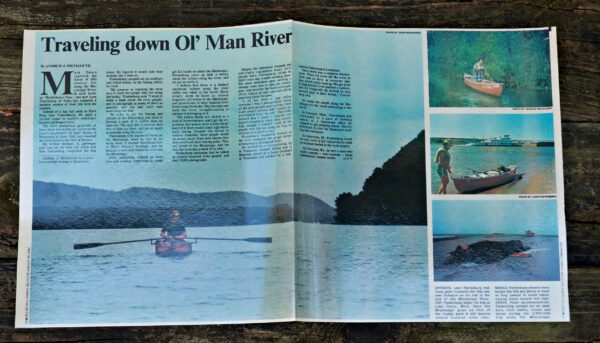
I learned about sore feet after completing an end-to-end canoe trip of the Mississippi River.
In 1980, I canoed the Mississippi River from the headwaters at Lake Itasca, Minnesota to Venice, Louisiana. The winter was spent in Vicksburg, Mississippi. In July I headed back to Iowa, walking on the levees. In Greenville, MS, I hitched a ride on a towboat, which took me to Louisiana, Missouri, then I took off hiking toward Ames.
I walked on gravel roads, carrying a 25-pound pack and wearing Adidas tennis shoes, and averaged 20-to-25 miles a day. Then one morning at dawn I decided to see how far I could walk in one day. I hiked steadily until it was almost dusk, then my left foot started to hurt. Soon it started to really hurt. Then it hurt like hell. I hobbled along, eyeing roadside cornfields as potential places to camp for the night. Behind me, I heard the clop-clop-clop of an approaching Amish horse and buggy.
“I believe even this horse is going faster than you,” the driver commented. “Would you like a ride?”
My backpack was tossed into the back, and I rode into Milton, Iowa in style. I was about 80+ miles from home. The next morning, my foot was swollen and tender and hard to walk on. I gave in to common sense and called my dad to come pick me up.
Dad, a former WWII infantryman, took one look at my foot and told me what had happened.
“You’ve got a stone bruise. It comes from carrying a heavy pack, wearing lightweight shoes and walking too far,” he pronounced. “What were you thinking?” (Not an exact quote.)
Here are ten tips to help you avoid sore feet.
Conditioning: Far too many people decide to go hiking or backpacking without any prior physical conditioning. If you are a typical sedentary desk worker, your feet and legs are not accustomed to walking, and your feet are soft. They will soon hurt when you start walking.

My footwear: flip-flops, running shoes, Merrill walking shoes, Danner day hikers, Cabellas Outfitters and Sorel snow boots. One of these pairs of shoes will take care of my hiking needs.
Long before you take off on a backpack trip or long hike do regular walking, preferably in the shoes or boots you will use on the trail. I walk every night, rain or shine. My office supervisor and walking partner is an 11-year-old black Lab. She pesters me until we go out, and I walk a minimum of between one and two miles daily. The Lab probably does four to six miles!
Proper footwear: My footwear collection might rival any socialite’s collection of designer shoes. I live in Oregon and Mississippi and have everything from flip-flops to arctic insulated snow boots. I use them all. Your footwear should be appropriate to the hiking conditions you anticipate. For example, don’t wear insulated boots in hot weather, or breathable jungle boots in snow. While you might get by for a short time with these mismatched combinations, sore feet will inevitably happen.

Rocky Mountain National Park, August 1986 – These full-grain leather Lowa boots worked really well in the challenging terrain.
Before you invest in any hikers, make sure they fit you well. Go to a reputable outdoors or shoe store, and get both your feet measured. It’s best to try on boots at the end of the day, when your feet are naturally bigger. Get a hiking boot that is slightly bigger than your standard street shoes. I like a a thumb’s width between the end of my big toe and the end of the boot. Get a wider width than you normally wear in street shoes. Your feet will naturally expand when hiking. (Check out this post on how to pick out hiking boots.)
Waterproof or not? IMO, most sore feet start when the feet start sweating and soak the socks. If you’re hiking in soggy socks, this softens the skin, making the feet more vulnerable to blisters and chaffing. This is exacerbated with a waterproof shoe. In most hot weather summer hiking, you won’t need a waterproof, insulated shoe. The shoe needs to breathe, so the moisture can leave.
What about those waterproof liners that breathe while still staying waterproof? I haven’t found one yet that works well. Yeah, they may keep the water out, but they will also keep the sweat-generated moisture in. I noticed this wearing my go-to Danner Cougars. While I love the boots, they are hotter than they need be. My new Danner Fullbore Coyote Hot boots are not waterproof, and they have breathable mesh uppers. They are noticeably cooler than the Cougars.
Flashback: I saw a herd of mule deer through my binoculars, but I would have to wade the John Day River in north Central Oregon to get to them. I waded the thigh-deep river, without taking off my Cougars. On the other side, I stopped to pour the water out of my boots and to wring out my socks. For the rest of the day, it felt like my feet were in plastic buckets. My feet and boots were slow to dry out, even though I was hiking and climbing steadily. By the end of the day I had sore feet.
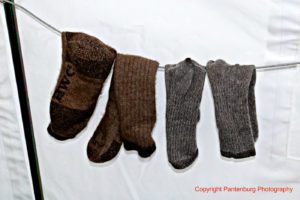
Quality wool socks are critical to preventing sore feet.
Boot break-in: NEVER wear a brand new boot on a trip without first breaking them in. The best way is to start several weeks before the trip and wear them walking. (See conditioning^^^) On occasion I have soaked a pair of new boots in water, then walked in them until they were dry. While this speeds up the break-in process, this isn’t ideal and doesn’t mean the boots are completely ready to go hiking.
Socks: Next to well-fitting boots, socks are the most important thing to keep you from getting sore feet. Don’t get cotton athletic socks. Cotton holds moisture, and a cotton sock will get soggy and stay that way. My all-around favorite sock material is wool because it breathes and wicks sweat away from the foot. (Here is why you should wear wool socks for summer hiking.)
Sock liners: Thin, polypropylene sock liner, worn next to the skin, can be wonderful for preventing blisters. The liners cling to the foot, and the slick surface prevents the sock from rubbing against the skin.
Insoles: The foot bed liner is important for comfort. If you have a high arch, or other unique foot structure, check out some insoles. It might be money well spent to consult a podiatrist for recommendations on the best insoles for you.
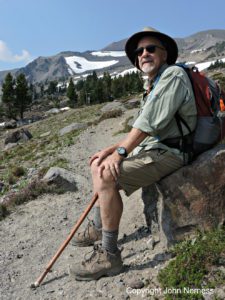
Below South Sister in Central Oregon, August 2017 – I enjoy the mountains, and don’t want my feet to hurt!
Carry and use Moleskin: Moleskin is a soft fabric with a thin layer of felt attached to a sticky backing. It is most often used on the feet to protect the skin from rubbing against footwear or against itself. It can also help cushion the feet.
When you’re on the trail, follow these tips:
- Make sure there are no wrinkles in your socks. It’s easy to get wrinkles across the arch when shoving your foot into the boot.
- When you take off from the trailhead, pay attention to how your feet and the boots feel. If you feel a hot spot developing, stop and apply Moleskin, or remove the wrinkle in your sock.
- Watch the trail elevation. If you are climbing on a steep trail, chances are your foot will slide back, and a hot spot might start developing on your heel. Going downhill, your foot might slide forward, bruising the ends of your toes. Don’t hesitate to stop and tighten or adjust the laces on your boots.
- The sandy, dusty composition of many backcountry trails can be slippery, and cause your feet to slide around. This may create friction in unexpected areas of the boot.
- At the noon lunch break, take off your boots, and open them up to the sun. This may help dissipate some of the interior moisture. Wipe them out with the tops of your sock.
- Change socks. It is a good idea to periodically swap out dry socks. If possible, rinse out the socks you changed from and tie them to the outside of your pack so they dry. That way you’ll always have dry socks.
Please click here to check out and subscribe to the SurvivalCommonSense.com YouTube channel – thanks!

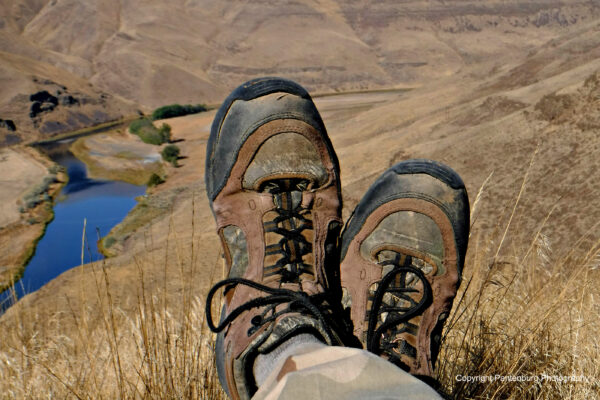



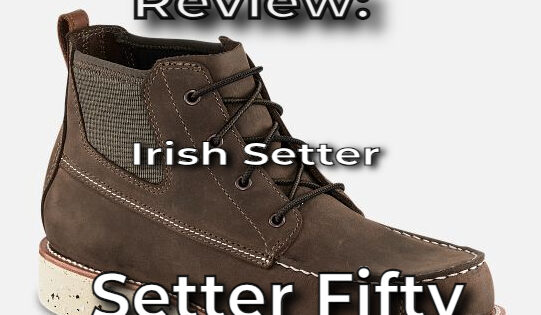
Leave a Reply